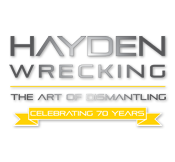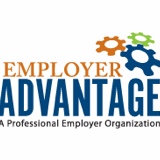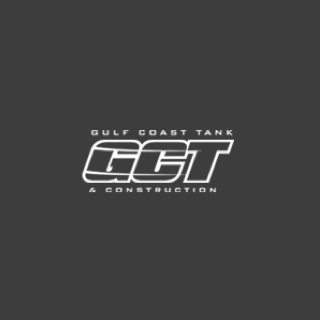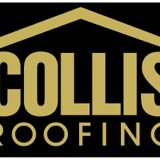Title Page
-
Client
-
Project
-
Conducted on
-
Location
-
Prepared by
DEMOLITION
-
Pre-planned and each task supervised
-
Adjacent structures and public protected
EXCAVATION
-
Utilities located and marked
-
Daily reports submitted by COMPETENT person
-
Perimeter warnings clearly posted
ILLUMINATION
-
Adequate light levels maintained per use of space
-
Temporary lights are safely installed and guarded
TRAFFIC CONTROLS
-
Emergency access roads are managed
-
Signage and flag persons are as required
-
Speed limits and controls are obeyed
BARRICADES, FENCES & GATES
-
Perimeter security is intact and appropriate
-
Exterior signage is clear and appropriate
-
Shafts, floor holes, and slab edges guarded
HEAVY EQUIPMENT & VEHICLES
-
Proper maintenance
-
Trained and qualified operators and signal people
-
Safety features in place and functioning
-
Safe hauling of people and materials
CRANES & RIGGING
-
Proper certifications and maintenance
-
Proper set ups for conditions and operations
-
Trained and qualified operators and signal people
-
Safety features in place and functioning
-
Rigging checked and properly used
-
Counterweight & swing dangers marked
-
Proper clearances from electric and object contact
HOISTS (PERSONNEL & MATERIAL)
-
Proper use, maintenance and signage
-
Trained operators
WORKER’S SAFETY TRAINING
-
Weekly “Tool Box” training conducted
-
New worker safety orientations completed
-
Individual safety training for new tasks conducted
PERSONAL PROTECTIVE EQUIPMENT
-
100% use of hard hats and eye protection
-
Fall arrest or restraint equipment used properly
-
Hearing, feet, hands, faces, arms and other parts
SANITATION
-
Number and condition of toilet facilities
-
Adequate, proper arrangement for drinking water
-
Sources of non-potable water clearly marked
EMERGENCY ACTION PLAN
-
Emergency numbers available
-
First aid certifications and logs are up to date
-
Current plan is appropriate for site conditions
FIRE PROTECTION
-
Fire extinguishers inspected, in required locations
-
Fire monitors trained and posted as necessary
-
Hydrants, permanent systems in best possible order
-
Proper signage posted at hazardous locations
-
Proper quantities of flammables and combustibles
HAZARD COMMUNICATION PROGRAM
-
Safety Data Sheets (SDS) current and available for all items
-
Written program, inventory, training records current
-
All containers are clearly marked and labeled
HAZARDOUS MATERIALS / WASTE
-
Proper handling and use (ventilation, PPE, etc.)
-
Proper spill control and disposal plan
-
Appropriate warning signs and systems in place
WEATHER PROTECTION
-
Weather related shut down plan is adequate
-
Temporary bracing and tie-offs are adequate
-
Workers are trained for current climate issues
SCAFFOLDS and AERIAL LIFT PLATFORMS
-
All users and operators are trained
-
Foundations and suspension structures are proper
-
Frame parts, sizes and braces are proper
-
Access and work platforms are proper and safe
-
Overhead hazards are addressed
-
Fall protection arrangements are appropriate
LADDERS
-
Proper types, sizes, and conditions
-
Safely located, placed, secured and used
-
Ladders removed at end of shifts (when required)
-
Ladder inspections are conducted responsibly
STAIRS, RAMPS, and LANDINGS
-
Proper designs, materials and construction
-
Handrail, guard rails, and toe boards as required
-
Clean, dry, cleated, and pans filled as required
HAND, POWER, and POWDER-ACTUATED TOOLS
-
Hand tools (handles, teeth, and hammer heads)
-
Power tools and cords inspected for safe use
-
Correct guards, blades, disks and accessories
-
Proper pressures and safeguards for pneumatics
-
Operators of Powder-Actuated tools are trained
-
Unfired shots and loads are disposed of properly
ELECTRICAL
-
GFCI or Assured Equip. Grounding Program used
-
Sources of service are locked out from casual access
-
Types of cords and conductor sizes are appropriate
-
Panels and devices are properly marked
COMPRESSORS, GENERATORS, WELDERS
-
Exhaust (thermal and atmospheric) issues addressed
-
Safety features and safeguard requirements verified
WELDING & BURNING
-
Proper permits in place
-
Condition of cables, hoses, guages, torches, etc.
-
Cylinders properly stored, separated, and secured
-
Proper fire protection and monitoring in place
-
Flash-back arrestors and flash burn screens used
-
Proper PPE and training for users and helpers
FLAMMABLES & COMBUSTIBLES
-
Safe storage distances from fences and buildings
-
Extinguishers, proper signs and container labels
-
Secondary containment arranged as required
-
Proper portable containers and safety features
-
Bonding, grounding, ventilation and protection
CONFINED SPACES
-
All identified by proper signage
-
Written plan and documented training
-
Proper permits in place and enforced
-
Adequate rescue measures available
-
Testing equipment calibrated and properly used
HOUSEKEEPING
-
Storage of materials is stable and accessible
-
Access (extinguishers, valves, showers, switches)
-
Physical hazard controls (slips, trips, punctures)
-
Adequate number and locations for trash containers
-
Proper management of cords, hoses, and cables
-
Dust, sand and particulate mopped or swept out
OTHER:
-
OTHER:
Confirmation
-
General Comments/Summary
-
Inspectors Signature:














